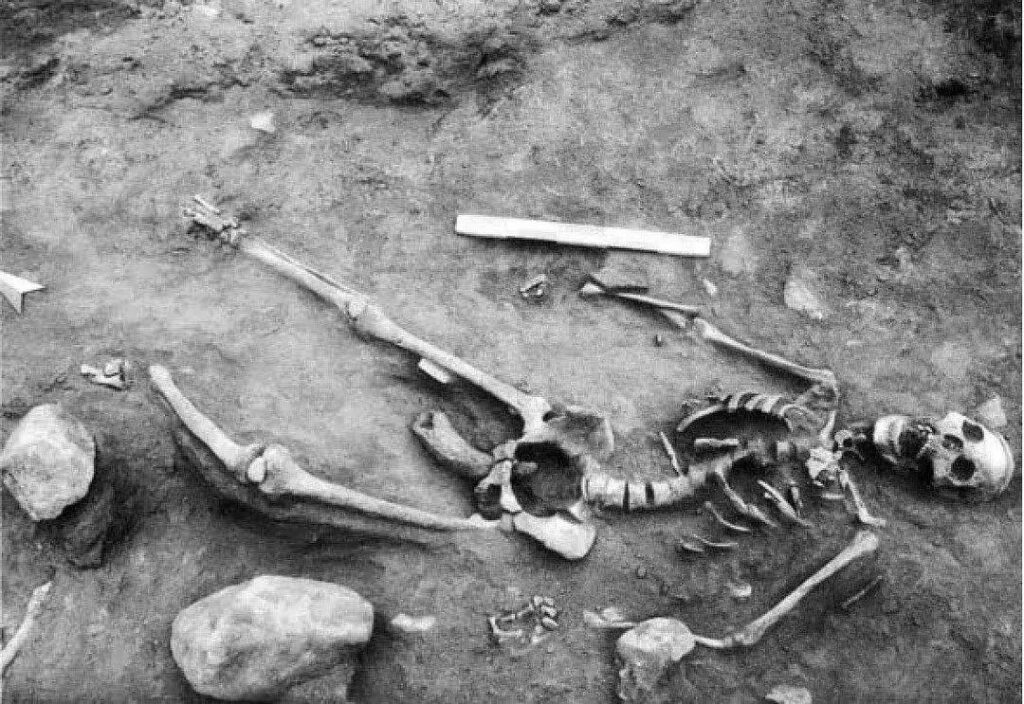At the Taosi archaeological site in Shanxi Province, China, a puzzling discovery was made in a Neolithic mass grave. Among the many remains, archaeologists uncovered the skeleton of a woman with a cow horn thrust into her pelvis and a broken spine. Dating back to the Longshan culture (circa 2300–1900 BCE), this unusual burial raises intriguing questions about ancient rituals, societal practices, and the possible role of violence in death.
The Taosi site is well-known for its complex structures, social stratification, and evidence of early civilization in China. The woman’s remains, however, stand out due to the bizarre nature of the burial. The presence of a cow horn in her pelvis suggests that this may not have been an ordinary interment. Scholars have speculated whether this indicates a form of ritualistic practice, punishment, or even sacrifice. The fact that her spine was broken adds further complexity, suggesting a possible violent cause of death or post-mortem treatment.
Burials of this kind often reflect deeper cultural or spiritual beliefs, and this find may point to the significance of certain animals—such as cows—in Neolithic Chinese rituals. Whether the horn symbolized punishment, sacrifice, or something more symbolic remains unknown. Some theories suggest that the cow horn could represent a form of protection or connection to the afterlife, while others lean toward the interpretation of the woman being a victim of some form of societal punishment.
Taosi itself is an important archaeological site, offering rich insights into the early stages of Chinese civilization. In addition to mass graves, the site features large settlements, early forms of pottery, and one of the world’s oldest astronomical observatories. These findings provide a window into the complex social and ritualistic practices of the Longshan culture, but this woman’s burial remains one of the more mysterious discoveries.
Ultimately, the burial at Taosi forces us to confront the complexity of ancient belief systems and how early societies viewed life, death, and punishment. While much remains speculative, this discovery continues to fascinate archaeologists and adds a new layer to our understanding of Neolithic China.

